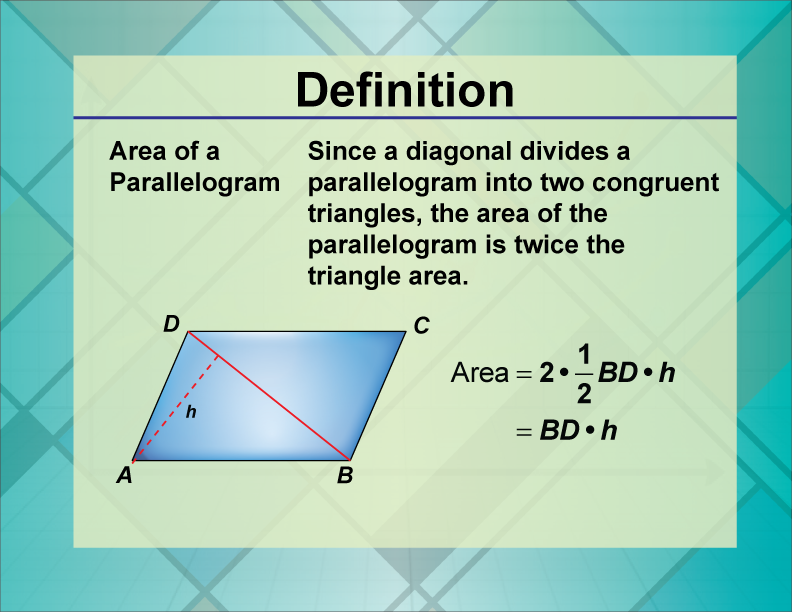
Display Title
Definition--Quadrilateral Concepts--Area of a Parallelogram
Display Title
Definition--Quadrilateral Concepts--Area of a Parallelogram
Area of a Parallelogram

Topic
Quadrilaterals
Definition
The area of a parallelogram is calculated by multiplying the base by the height.
Description
The area of a parallelogram is an important concept in geometry as it relates to various real-world applications such as calculating the surface area of a roof or a plot of land. The formula to find the area is given by A = base × height. This concept emphasizes the essential nature of quadrilaterals in both theoretical and practical contexts. Understanding how to precisely calculate this area not only aids in mathematical proficiency but also fosters spatial reasoning skills, indicating its significance in math education.

For a complete collection of terms related to Quadrilaterals click on this link: Quadrilaterals Collection.
| Common Core Standards | CCSS.MATH.CONTENT.5.G.B.3, CCSS.MATH.CONTENT.5.G.B.4, CCSS.MATH.CONTENT.3.G.A.1 |
|---|---|
| Grade Range | 3 - 8 |
| Curriculum Nodes |
Geometry • Quadrilaterals • Definition of a Quadrilateral |
| Copyright Year | 2021 |
| Keywords | quadrilateral, polygon, definitions, glossary term, parallelogram, parallelograms |